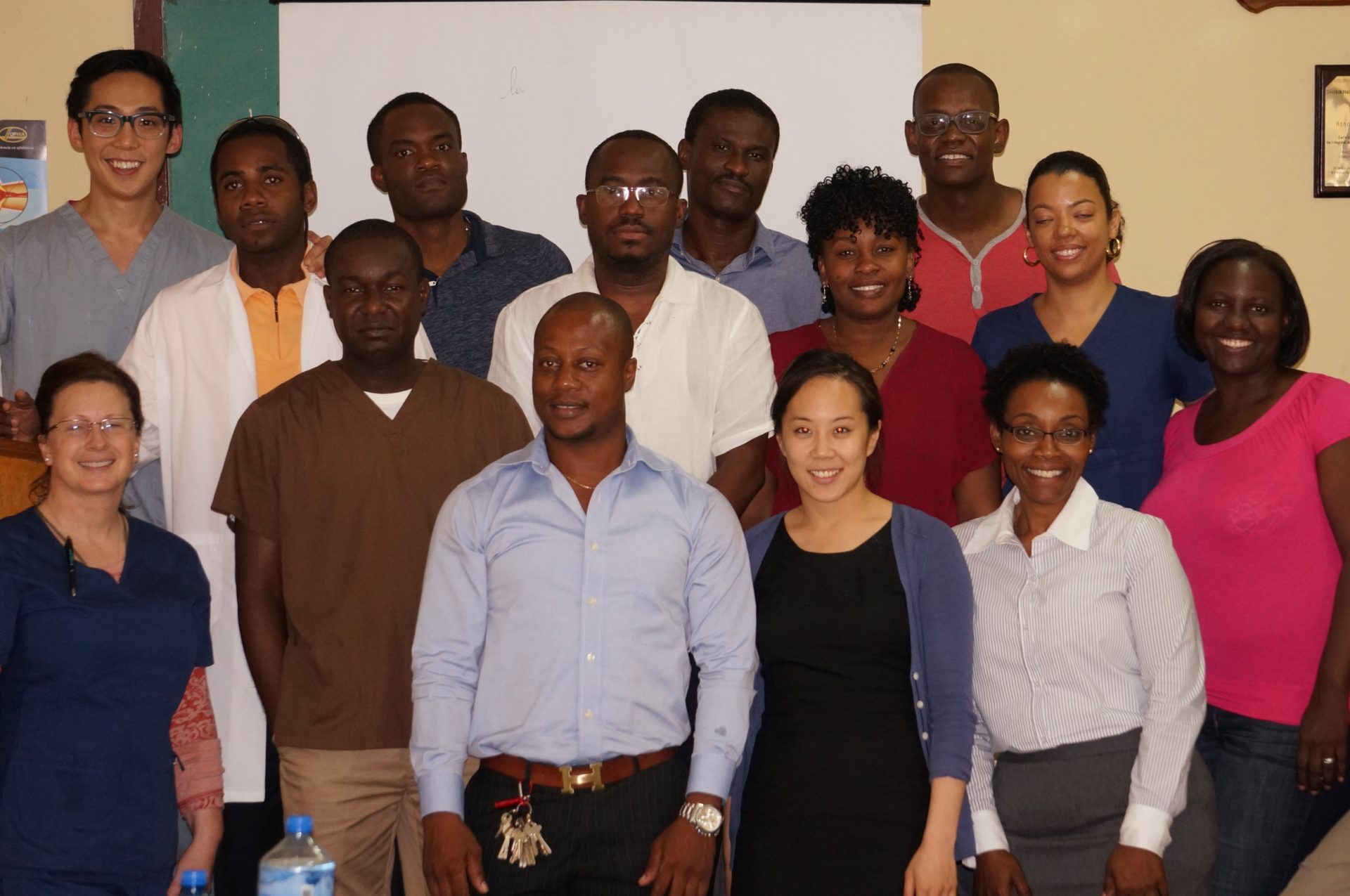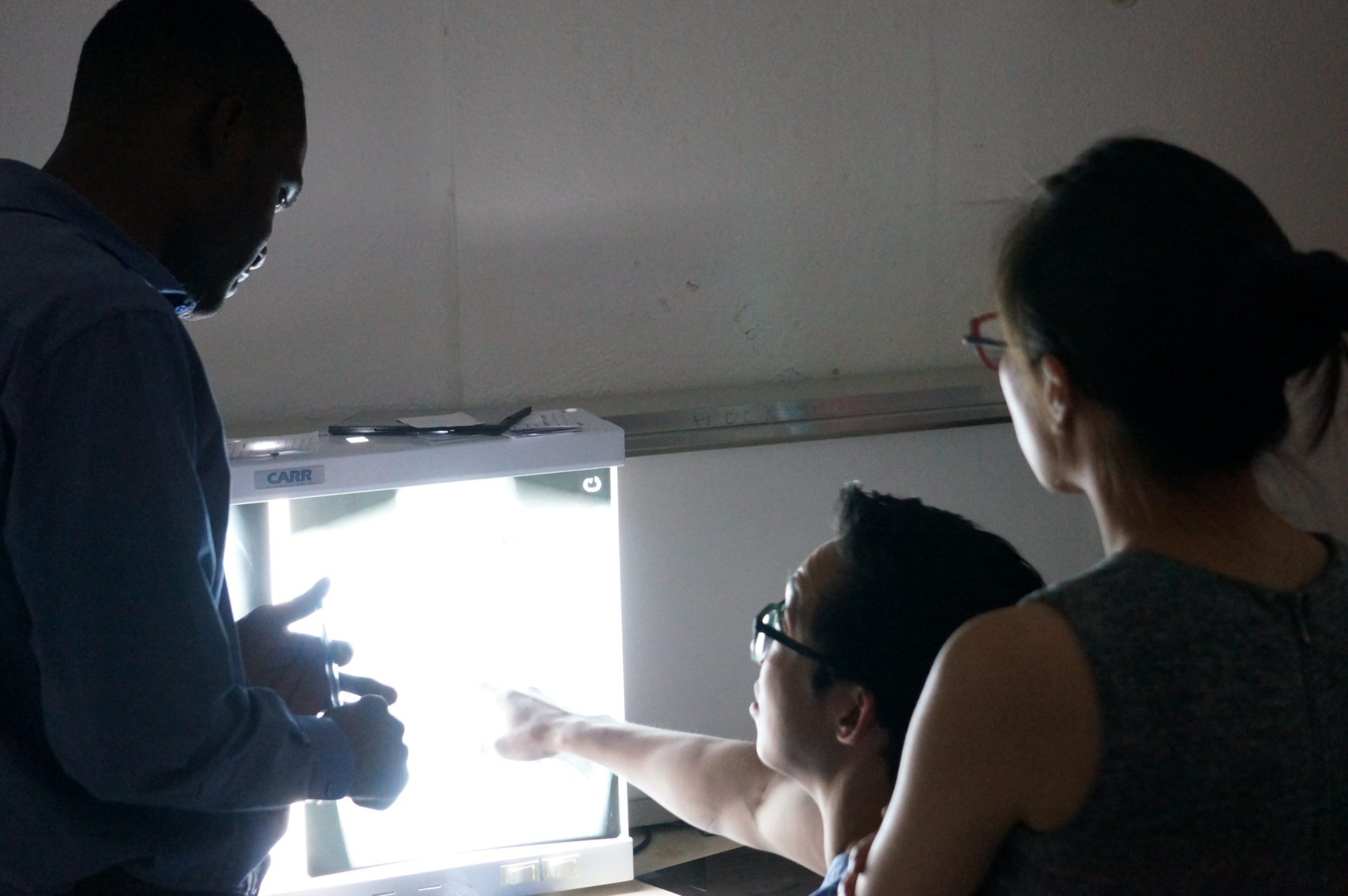
RAD-AID Haiti volunteers and Haitian radiology residents, 2018
Haiti, a nation of over 10 million people, is all too familiar with natural disasters. More than half of the total health expenditure (THE) in Haiti goes toward curative care. Despite 38% of the THE going to the hospital sector, the hospitals remain severely under-equipped (World Bank, 2017). The powerful earthquake in 2010 killed many healthcare professionals and destroyed the country’s medical infrastructure, including the only teaching hospital in Haiti. Even prior to the earthquake, the country’s healthcare had been chronically underfunded and short-staffed. Only 40% of population had access to care, a number that has not changed much in recent years. Haiti also has the lowest health workers to population ratio and per capita annual healthcare spending in the Americas (Reliefweb).
Radiology Services
Radiology professionals and equipment are limited in Haiti, especially since the earthquake of 2010. According to the WHO, Haiti has 0.29 CT scan unit per million population, as opposed to nearly 40 in Iceland.
At last count in 2016, there were 19 attending radiologists in Haiti. A radiology residency program was reestablished in Hôpital d l’Universite d’Etat d’Haiti (HUEH) in Port-au-Prince in 2014. The first radiologists of the new residency program are beginning to graduate now.
Radiologic infrastructure is minimal and underfunded. There is currently only one operational CT scanner in the public sector. Radiography and sonography are available in a limited number of healthcare facilities in Haiti, but are also often inoperable due to equipment malfunction or user inexperience.

RAD-AID Haiti volunteers
RAD-AID in Haiti
RAD-AID responded to Haiti’s earthquake in 2010 by sending numerous teams to perform clinical assistance, educational support, and conduct a Radiology Readiness Survey to help rebuild Haitian radiology capacity for vital health care needs. In 2016, RAD-AID announced an agreement with Philips Healthcare and Philips Foundation that donated two new CT scanners to Haiti, currently destined for Caracol and Gonaïves, which will nearly double Haiti’s CT capacity. The donation also includes personnel-training and equipment-planning in 2018-2020.
RAD-AID’s work in Haiti emphasizes education, support, and training, to run in parallel with the donation of equipment. As such, the CT initiative is expected to send a stream of RAD-AID team members to provide CT training, including technologists, physicians, physicists, engineers, nurses, and other health professionals.
Additionally, RAD-AID has helped to train physicians, technologists, and nurses at other sites around the country, such as Quisqueya University. Our team, which normally consists of radiology attendings and residents, technologists, and physicists, travels to Haiti regularly, conducting didactic and hands-on teaching of the radiology residents at the University Hospital of Haiti in Port-au-Prince as well as technologists and nurses at other locations. Additionally, RAD-AID has recently started to develop a breast screening program in Haiti, with a particular emphasis on teaching physicians and nurses about the epidemiology and pathophysiology of breast disease, the clinical breast exam, and ultrasound-based diagnosis of breast abnormalities.